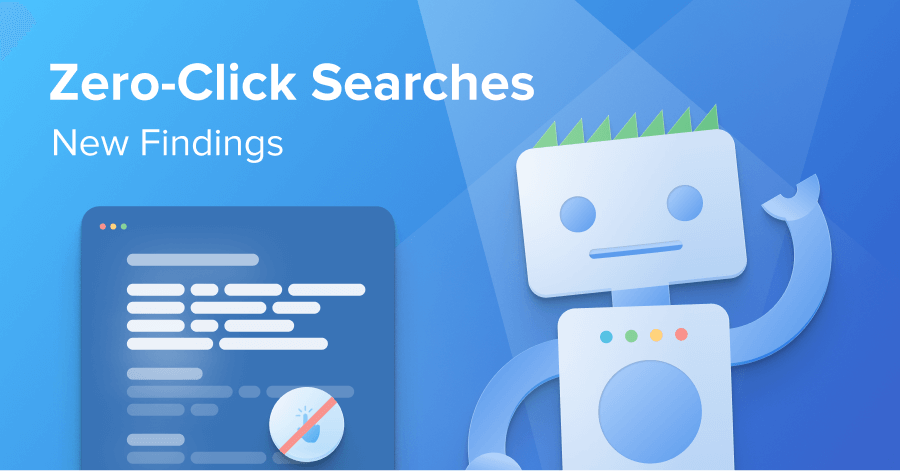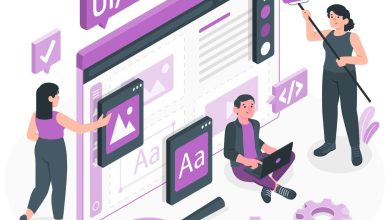
The linear nature of brand discovery through clicking sites is now compromised with the introduction of zero-click predictive UI. This maturation of gen-AI is transforming the landscape for AI website design, pushing every forward-thinking web design company to rethink traditional user journeys. That is further shaping how we interact with technology without any interface. From experiences shaped by graphical user interfaces, technological evolution has put forward voice assistants, AI-powered interfaces, and gesture-based interactions to meet user needs. Following this, a lot of queries do not end on a click. The search engines continue to evolve, putting special emphasis on providing users with instant answers. This eliminates the need for users to click through multiple links seeking a response to a search intent.
Bain & Company’s study highlights that a substantial 80% of consumers depend on zero-click search results for approximately 40% of their search needs. These statistics have made it difficult for businesses to rely on traditional SEO practices solely. The emerging shift provokes the transformation of AI web design for an emerging zeroUI era. This blog will cover aspects of how AI‑driven predictive interfaces work, why zero‑click systems are a breakthrough, and how brands and designers can integrate them effectively.
Understanding Zero UI
A zero-click search can be understood in terms where search results are instantly produced on the results page without further clicking on links. It is also termed as zero user interface. It narrows down the communication layer between the user and the technology.
Technological sensors like facial recognition, voice assistants, and biometrics enable users with zero UI devices. It shows results in the structure of featured snippets, knowledge panels, and local packs. It acts as a doorbell camera, fostering human interaction with technology following natural language processing. Systems guided by an AI website designer can learn from sensor data, gestures, or voice commands to anticipate user needs.
Key Technologies/Principles That Drive Zero UI
The foundation of zero ui is backed by several technologies. They frequently work together to record reactions or initiate system functions. For example, turning your TV on. They include:
1. Motion, Gesture, and Proximity Sensors
Sensor technologies provide grounds for touchless interaction in smart devices. The gesture recognition systems seamlessly integrate AI with sensors featuring accelerometers and infrared cameras. Basic feedback responds through predefined vibration patterns to fill you with information. Proximity sensors rely on IR emission. It emits radiation, bounces back from surfaces, triggering a response when the reflected IR light is detected at a sufficient intensity. Many AI website design solutions take inspiration from this technology and aid in streamlining interaction.
2. Voice-Activated Interfaces
Voice interfaces are one of the peak features of the Zero UI interface. They serve as an entry point to plenty of zero UI systems that are already in action. Your simple voice command “Siri, call John” is a driving example of this voice-activated interface. This approach is influencing AI web design, where intuitive voice-driven navigation is becoming a key part of the user experience.
3. Biometric Authentication
It captures your biometric movement, like fingerprints, facial recognition and even DNA, to surpass security to Zero Ui tools. These recognition scans authenticate users and match those characteristics in real time, confirming user authentication. When you press a little too long on your phone’s screen to unlock features. Biometric sensors are put to use, and the software captures the unique identifiers. Similar principles are being adapted in AI design website approaches to enhance security in virtual interactions.
4. Artificial Intelligence
When Zero Ui is leveraged collaboratively with AI, it works efficiently. Sensor data, as prompted by those predictive algorithms, collects user information to provide with improved UX. A smart fridge that suggests recipes based on what it detects inside demonstrates how AI powers Zero UI by removing manual input. Similarly, in AI website design, sites can predict what content a visitor needs next, personalize layouts, and streamline flows
Modern AI web design builders take these principles further, allowing businesses to create websites that adapt dynamically to user behaviour.
 Why Zero-Click Matters Now
Why Zero-Click Matters Now
1. The Click Fatigue Problem
Users today are relying on digital sources to shape decisions. A UX study confirms that every extra click contributes to increased cognitive overhead. People are abandoning tasks under the immense pressure of gaining the number of clicks or interactions required to complete a task. It is overwhelming and leads to click fatigue issues. In AI web design builders, predictive UI helps reduce that frustration by shortening user journeys.
2. Speed as a Conversion Multiplier
Even a delay of a fraction of a second can degrade the conversion rate by 7%. That means a website with a conversion rate of 100 per thousand visitors. A one-second delay can decrease the number by 93. The click loss translates to a direct revenue hit, affecting your overall profitability. AI design website technologies use data from sensors, voice commands, or even gestures to anticipate what users want before they ask.
3. Personalization That Actually Feels Useful
The definition of personalization has evolved from basic segmentation. Predictive UI uses machine learning algorithms to anticipate user needs in real-time. That prompts location-specific offers, time-relevant and behaviour-specific responses. This helps to anticipate repeat purchases following context-aware relevance. In modern AI design website approaches, predictive algorithms enhance personalization.
4. The New Baseline for Next-Gen Brands
Predictive UI is raising standards in website design. It will soon be a baseline expectation for users. Just as mobile-first design became essential. Predictive UI has raised the bar for intuitive interaction with technology. By strategic integration of AI in web design, competitors can gain an edge on user engagement.
Real-World Examples of Predictive UI
You already use predictive UI every day, even if you don’t notice it:
- Amazon: Notifications related to similar search items you may like. Product recommendations as per the purchase pattern of an individual.
- Spotify & Netflix: Personalized album additions. Autoplaying the “next song” lets you explore new songs you never knew you’d like.
- Healthcare Apps: AI-driven insights won’t let you miss your doctor’s appointments. It can help with quick diagnosis and predicted prescription refills. However, it still necessitates the need for a doctor.
- Banking Dashboards: Helping with caution messages to ensure fraud protection. Automatically surfacing bills and simplifying procedures through sensors.
This upcoming wave of AI web design is fostering convenience at the fingertips. The websites will adjust layouts, simplify user flows and reduce the number of steps required to complete a task.
How AI Website Design Tools Enable Predictive UI
AI-driven web design platforms are making this tech accessible to smaller businesses:
- Adaptive Layouts: AI-driven website design allows for adjusting the page layout and content as well. It draws on data to curate personalized user responses, making it more intuitive.
- Smart Checkout: Intelligent web design adapts to user behaviour, eliminating extra steps and smoothing the experience. This helps to save time and reduce efforts to complete a task. An AI website designer can redefine user experience and help adapt content presentation in real time.
- Search That Thinks Ahead: Following Context-Aware Relevance, predictive UI showcases real-time results according to specific time zones, relevant to the user’s current context.
- Voice & Gesture Input: voice input and gestures are making the audience more inclusive to technology. The reduced need for manual input feels more intuitive and user-friendly. Especially those with mobility issues can keep things on track with reduced effort in manual tasks. AI web design builders help designers with strategic angles on user experience and accessibility.
- AI Testing: This refers to the implementation of AI- machine learning to test the process of applications, digital products and websites. This approach employs automated A/B testing to compare different versions of products and sites. This approach substantially reduces the effort for manual testing and optimization.
With today’s AI website designers, you can prototype predictive features without building massive infrastructure from scratch. The future of the AI design website isn’t about replacing creativity; it’s about merging human-centric design with machine intelligence.
The Challenges and Risks
Predictive design isn’t perfect. There are serious considerations:
- Privacy: Prediction requires personalized data. When users share enough information, it poses a vulnerability risk. This raises a security question to balance personalization with data protection. Unlike static templates, AI web design builders enable flexible, adaptive, and intelligent interfaces that minimize effort while maximizing engagement.
- The Creep Factor: Users may start to feel uncomfortable when recommendations start to feel their minds being read. With algorithms working on point, it may leave users feeling invaded with their privacy.
- Algorithmic Bias: AI models that adapt to biased data can revert with biased outcomes that are not relevant to all social groups. It can exacerbate existing social biases and unfair outcomes.
- Loss of Control: Humans are driven by autonomy. Adapting to algorithmic decision making, Users might feel like they’re at the mercy of system algorithms. However, some human decisions need human expertise, and algorithms cannot suffice. Users need to learn to override algorithmic decisions in required scenarios.
This is why predictive UI must combine AI web design builders with strong ethical frameworks. Users need to override automated decisions to augment human decision-making rather than replace it.
The Future of Predictive UI in AI Web Design
Where is all this heading? Here are some clear signals:
- Cross-Device Journeys: It allows picking up half-done tasks on smart devices. For example, you may start work on a mobile. Later, you can continue the same on a laptop and finish the work on any device of your choice.
- Task Automation, Not Just Suggestions: You dont need to keep an eye on notifications. With AI website design, your travel sites book them as per your preferred dates.
- UX as an Invisible Layer: The best UI may be no UI at all. Just predictive actions running seamlessly in the background.
- Designers as System Trainers: The role of designers shifts from pixel-pushers to curators of AI logic, teaching systems what’s ethical, usable, and human-centred.
- Normalization of Predictive Flows: Just like responsive design is standard today, AI-based website design with predictive capabilities will be expected by default.
Designers who adopt an AI design website methodology can craft intuitive, frictionless journeys that feel natural rather than forced.
The future of web design is predictive. Let CS Web Solutions help you get there first.
Zero-click predictive UI is the new standard at the digital forefront. Businesses that are adapting to this transformation are miles ahead of the ones who are not.
The web of tomorrow will be about personalization with ease of interaction. Brands that are embracing AI web design are likely to stay ahead of the curve. That is what CS Web Solutions aim to offer.
By staying on top of technological advancements, blending with a human-centred strategy, we help to generate revenue through AI-powered solutions. Let’s build your next-gen website together. Contact us today and turn AI-driven innovation into your competitive advantage.

 Why Zero-Click Matters Now
Why Zero-Click Matters Now



